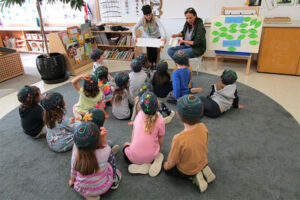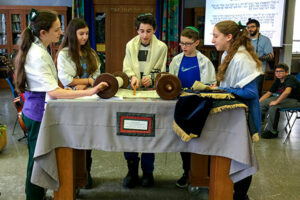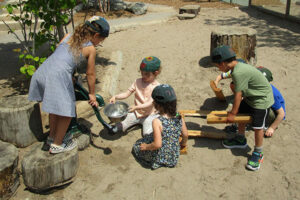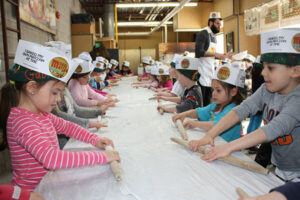Why do we wear Kissuyyim at Heschel? Parashat Noach, and the heavenly sign of the rainbow, give us a clue.
This week we read Parashat Noach, which is memorable for many reasons, not least of which is its account of how God placed a rainbow in the heavens after the flood. After human beings had desecrated the world through acts of injustice and cruelty, the calamitous flood was a reboot of creation. In its aftermath, God realized that even Noah and his family (who were the righteous of their generation) were by no means perfect. Since humans are naturally inclined to undisciplined behaviour, God vowed never again to destroy the earth because of humanity.
God’s new relationship with humanity takes into account this realization that people are not angels. We may not always act properly and require frameworks for how to treat one another. Thus, seven fundamental laws—known as the Noahide Laws—were put into place to ensure basic civility and social order. The rainbow was then offered as a sign of this new relationship.
The middah this week is: Give signs that show respect. We discussed the rainbow as a “sign” that reminds us it is not enough to simply say or feel that we care for and respect one another; we must show signs that demonstrate our respect for each other.
Our Kissuyyi Rosh is one of the most important signs of respect here at Heschel. By covering our heads, we demonstrate our respect for God, who is above and beyond our own consciousness. By wearing our Kissuyyim, we demonstrate respect for the principles of egalitarianism and halakhah; we demonstrate respect for others in our community whose Jewish practices may be different from our own; and we show that we can make compromises that enable learning together in a pluralistic Jewish community.
Like the rainbow above the world, the Kissuyyim above our heads signify a relationship founded on compromise, mutual understanding, civility, and social order.
Shabbat Shalom,
Moreh Greg










